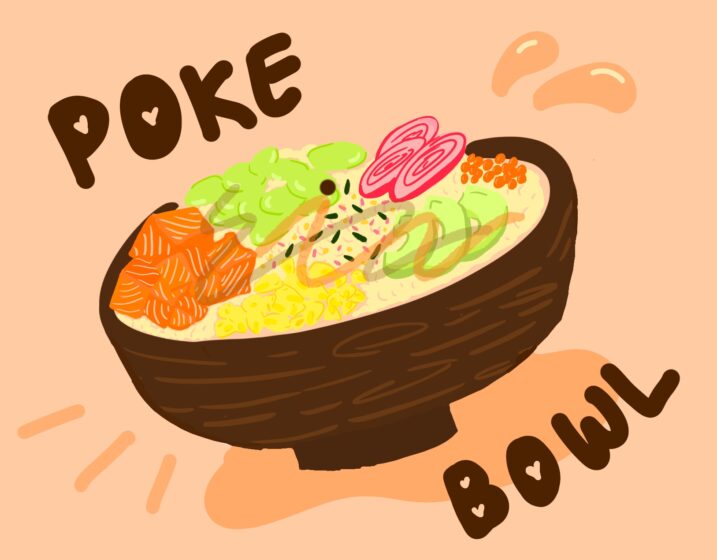
By Jenny Tran
Random question: have you ever been to Hawaii before? Second: have you ever eaten, even seen, a poke bowl?
Here’s the thing: there’s no right or wrong answer. In fact, one of the best things about food is its exposure to different cultures, doing all the traveling overseas and across borders for you. This is why whether you’ve even stepped foot in the Aloha state or not, you’ve probably seen poke bowls pop up around your local food places.
Poke originated from the Hawaiian islands, where Native Hawaiians enjoyed raw fish chopped into cubes, typically coupled with some salt to preserve its freshness. Later on, the dish gained popularity as fish became more accessible across the islands. Influences from different Western and Asian cultures introduced other ingredients like soy sauce and salmon, many of which became key additions for the dish.
Today, poke bowls have traveled far from the sparse islands into the mainland and other parts of the world, appealing to many consumers worldwide. Whether you’re walking through the streets of Honolulu, or Los Angeles, or New York City, there’s a chance you’ll stumble upon a place selling poke. And, considering its particulars, there is no question as to why this tasty and filling dish has become so popular.
Through time and rapid changes in culture, poke bowls have evolved to become much more than its traditional cubed raw fish. It is customizable in many locations, with its main two components being vegetables and fish. Choice of vegetable can vary from avocados to carrots to edamame, and a sprinkle of other ingredients like corn and chopped crab can also be offered. A base of some sort of rice is also typical.
Considering how nutrient-dense its ingredients are, poke bowls also provide a substantial supply of protein, fiber and vitamins. However, as all foods go, an excess of consumption can be dangerous. There are also risks of sickness through the digestion of raw fish, so it’s best to remain mindful when picking out a location to try these bowls.
However, don’t let that scare you away from trying this iconic dish at least once. Hawaii is famous for its rich and diverse food culture, blooming with a large selection of meals to try. And poke bowls have emerged somewhere at the top, proving time and time again that it is a staple dish even in places far from its origins.
If you’re curious, visit your local poke place, or gather the simple ingredients yourself. You don’t have to buy a ticket to Hawaii to explore the delectable world that poke bowls have to offer.





